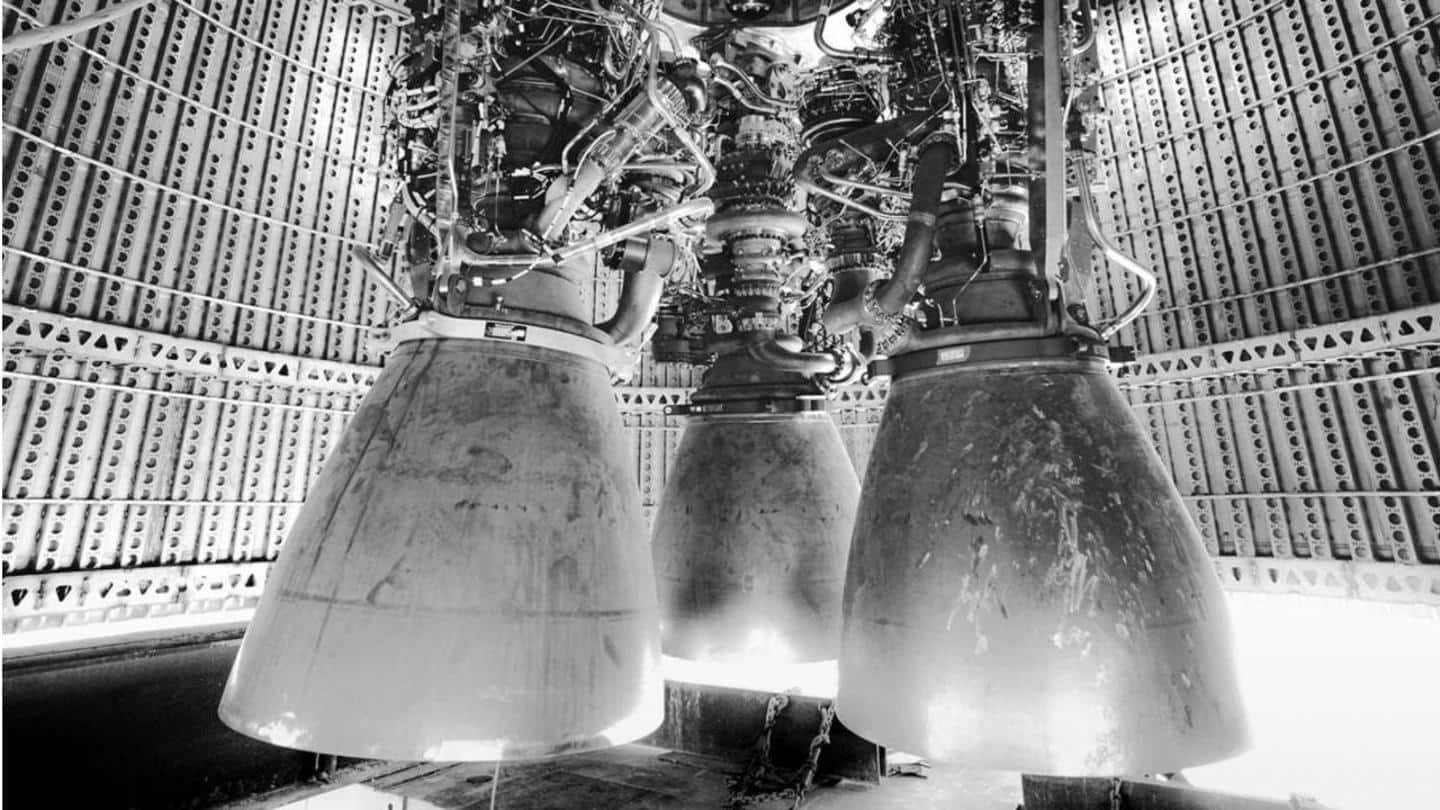
SpaceX tests Super Heavy Booster in hold-down test in Texas
What's the story
While Richard Branson's Virgin Galactic and Jeff Bezos's Blue Origin continue to fuss over the Kármán line, Elon Musk's SpaceX ignited all the engines on its Super Heavy booster that could fly tourists to Mars one day. The scaled-down version of the rocket was test fired using three Raptor engines that also power the company's Starship rockets. Here are more details.
Purpose
The Super Heavy Booster was powered by three Raptor engines
In recent months, SpaceX had some failures before it managed to launch and land the Starship rocket successfully at Boca Chica, Texas. The rocket is powered by three Raptor engines. The Super Heavy booster, on the other hand, would be powered by 32 Raptor engines that would help the rocket propel much heavier payloads to the Moon, to Mars, and beyond.
Scaled down
Hold-down test kept the booster rocket on the ground
On Monday, SpaceX fired up a scaled-down version of the Super Heavy booster rocket equipped with three engines for just a few seconds. It was a hold-down test so the rocket didn't take to the skies. CEO Elon Musk took to Twitter to say it was a "full test duration firing of 3 Raptors on Super Heavy Booster!" Perhaps he meant "full duration test".
Do you know?
If Starship rocket's three engines was overkill, meet Super Heavy
Interestingly, if you thought three engines was a bit much, the Falcon 9 rocket's first stage alone uses nine engines. Its elder sibling, the Falcon Heavy uses 27 engines during lift-off and the Starship's Super Heavy booster is expected to use 32 Raptor engines.
What next?
Super Heavy Booster will eventually be Starship's first stage booster
This particular Super Heavy is known as Booster 3. It's the latest prototype from SpaceX's Starship program that is developing a fully reusable rocket system for interstellar travel. Musk said that Booster 3's next test could involve the use of nine engines. The Super Heavy towers at over 70 meters in height. It will eventually carry the 50-meter tall Starship spacecraft on top.
Tourism plans
Booster 3 probably won't fly to space, Booster 4 will
Musk clarified that the Booster 3 would mostly be used for ground tests while the Booster 4 would perform test flights. As for SpaceX's interstellar tourism plans, if booster tests go well, the company could launch its first orbital flight with Starship in the summer. The Starship successfully flew to an altitude of ten kilometers in a previous test.